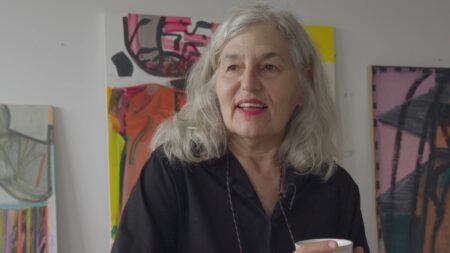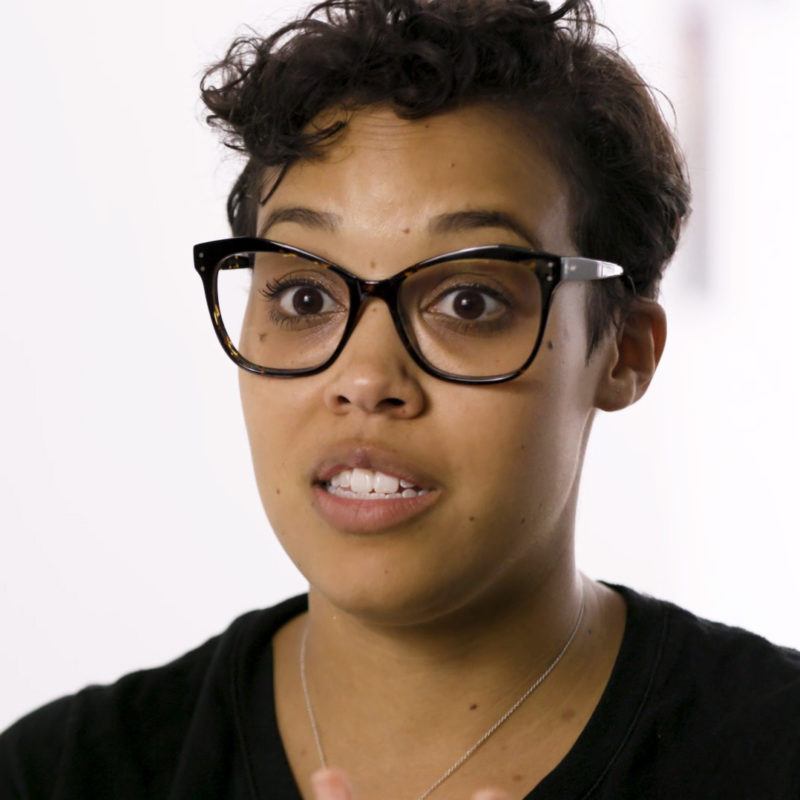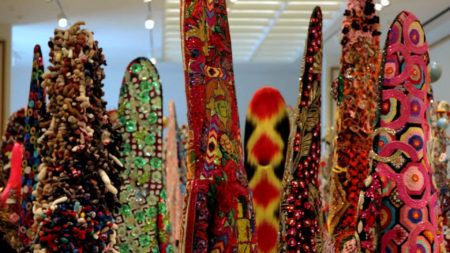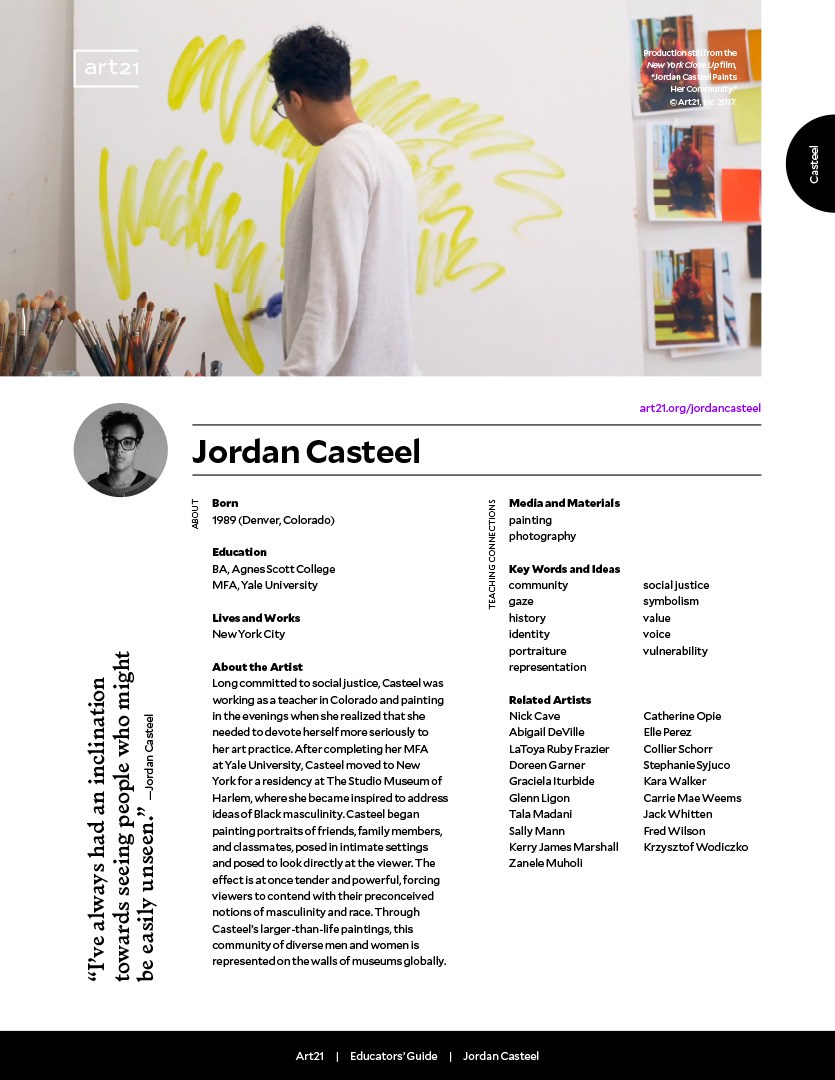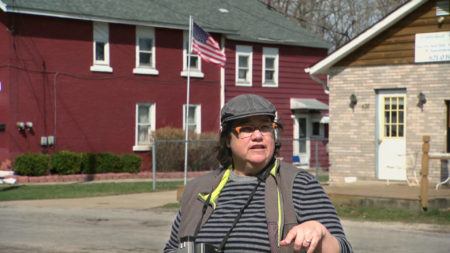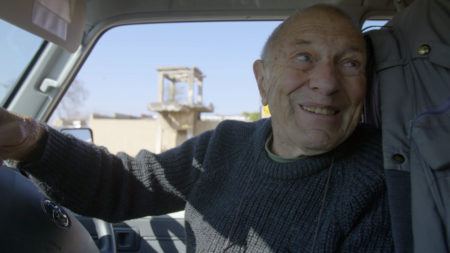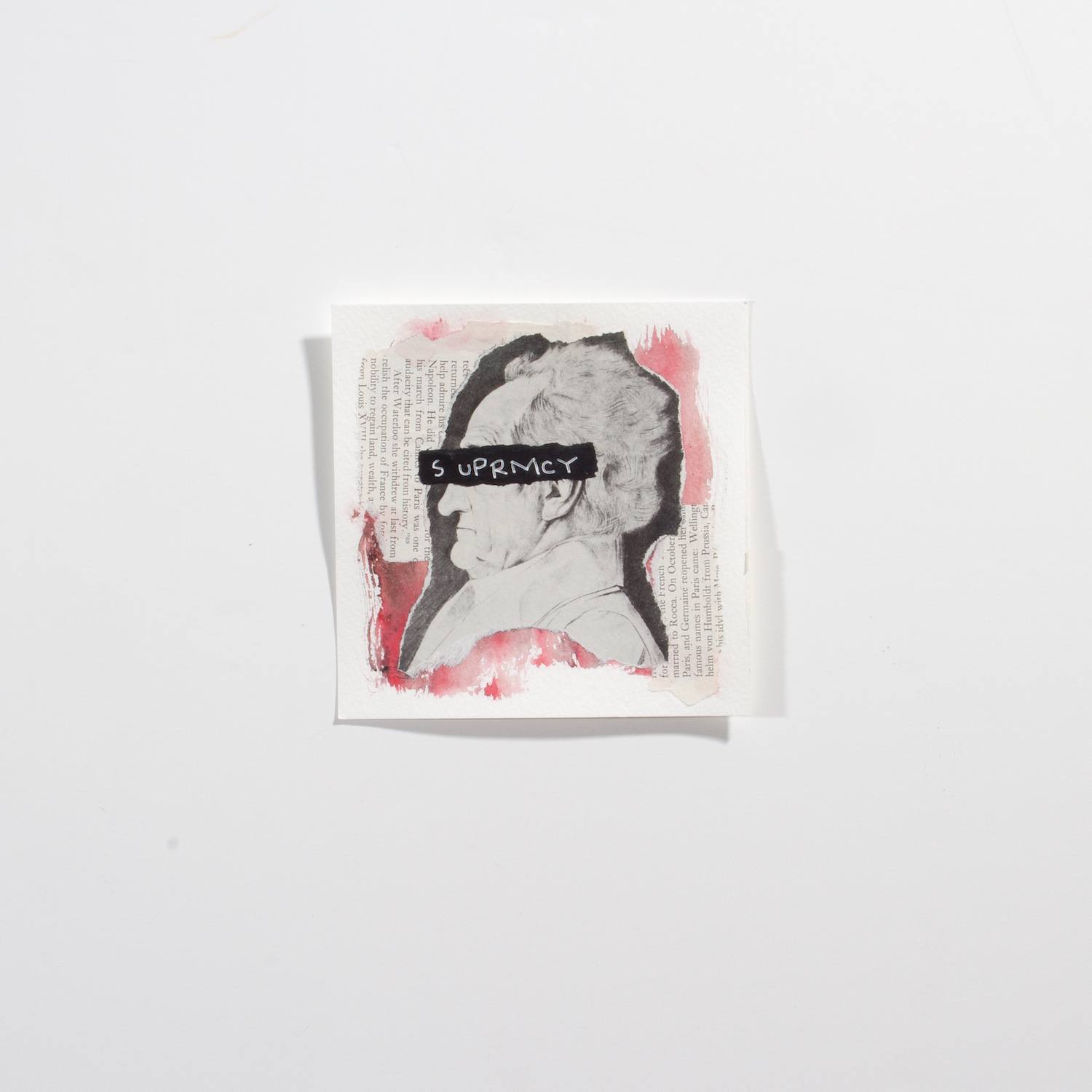Continue playing
(Time remaining: )
Play from beginning
Continue playing "{{ controller.videos[controller.getVideo(controller.currentVideo)].segmentParentTitle}}"
{{controller.videos[controller.getVideo(controller.currentVideo)].title}} has ended.
Jordan Casteel Paints Her Community
Where does a painter find her subject matter? With a process that takes her from the streets of Harlem to her studio in DUMBO, Brooklyn, artist Jordan Casteel paints vibrant large scale portraits, making visible the often unrepresented humanity of Black men. At first struggling to find subject matter that could speak to the political realities of police violence and implicit bias, Casteel drew inspiration from her twin brother. “People follow me like I’m a threat,” the artist remembers her brother saying, “but they don’t know anything about me.”
Together Casteel’s paintings illustrate the multiplicity of Black male experience; she began with nudes in domestic interiors before expanding to men on the sidewalk, the color and compositions celebrating the visual texture of her Harlem neighborhood. Casteel’s work is probing in its tender depiction of Black men who, although often strangers to the artist, gaze directly and intimately out at the viewer.
The film follows Casteel as she travels from a brunch at her aunt’s Harlem home to a studio visit with university students, to an informal hangout with friends and finally back to the streets of Harlem, mirroring the artist’s own navigation of New York’s diverse racial and cultural spaces. Recognizing her complex position as a Black woman painting the bodies of Black men, Casteel nevertheless feels present in the work.
“I get really conscious [of the fact that] his story is not mine to tell,” says the artist of her brother. “[I’ve] seen him as this really funny, sensitive, charismatic, loving young man…And as a result, this work really comes from my desire to share what I have known with the world.”
More information and creditsFeaturing footage from the Studio Museum in Harlem’s exhibition Regarding the Figure, and the Sharpe-Walentas studio residency in DUMBO.
Credits
New York Close Up Series Producer: Nick Ravich. Director: Orian Barki. Editor & Cinematography: Orian Barki. Additional Camera: Sam Balaban & Tom Kneller. Sound: Taeer Maymon. Design & Graphics: Open. Artwork Courtesy: Jordan Casteel. Music: UNRTHDX. Thanks: Lynda Blackmon Lowery, Marcia Cantarella, Phoebe Collings-James, Naima Green, Casey Kaplan, Chalia La Tour, Wayde McIntosh, Pennsylvania Academy of the Fine Arts, Sharpe-Walentas Studio Program, The Studio Museum of Harlem, Korde Tuttle, Didier William. © Art21, Inc. 2017. All Rights Reserved.
New York Close Up is supported, in part, by The Lambent Foundation; public funds from the New York City Department of Cultural Affairs in partnership with the City Council; VIA Art Fund; Lévy Gorvy; and by individual contributors.
Closed captionsAvailable in English, German, Romanian, Italian, Japanese, Korean, Chinese, Italian
Through the Art21 Translation Project, multilingual audiences from around the globe can contribute translations, making Art21 films more accessible worldwide. Translate this video now.
Interested in showing this film in an exhibition or public screening? To license this video please visit Licensing & Reproduction.
Jordan Casteel was born in 1989 in Denver, Colorado. She lives and works in New York. Casteel creates colossal portraits of the people in her community, including former classmates at Yale University, where she received her MFA in 2014; street vendors and business owners in her Harlem neighborhood; and students from her classes at Rutgers University-Newark. Rendered in vibrant hues of amber, lavender, and indigo, Casteel’s oil paintings confront traditional notions of gender and race in portraiture, with the expressed purpose of featuring those who might not otherwise be portrayed on museum walls.
“I needed to find a way to combine my desire to create a sense of visibility around my family and my brothers that was feeling absent at that time.”
Jordan Casteel
Black Voices
Nick Cave
Kerry James Marshall
Educators' Guide: Jordan Casteel
The questions and activities included in this guide are recommendations for incorporating Art21 films featuring Jordan Casteel into your classroom.
How can artists sustain our collective memory of injustice through their work?
Graciela Iturbide
Catherine Opie
David Goldblatt
Playing with Numbers: Black Representation in American Art Institutions
Art history professor Olubukola Gbadegesin cautions against celebrating the recent trend of art institutions collecting the work of Black artists.
